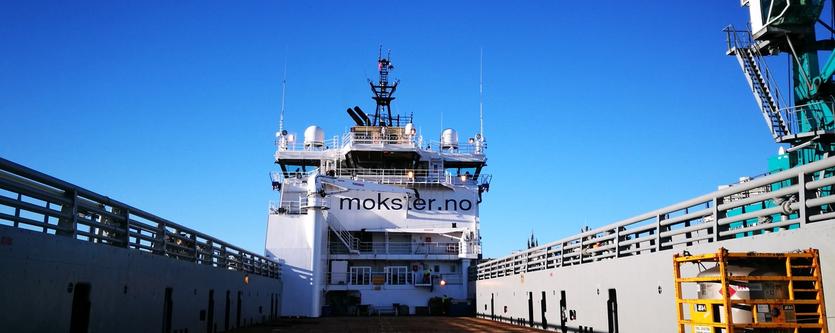
IMO Polar Code coming into force
“The International Code for Ships Operating in Polar Waters”, the IMO Polar Code, has been developed in order to increase the safety of ship operation and mitigate the impact on the people and environment in the remote, vulnerable and potentially harsh polar waters.
The Polarcode has introduced new international standards on matters such as ship design, anti-pollution regimes, crew training and safety.
With the Code coming in to force in 2017 for new vessels and 2018 for existing vessels, Simon Møkster Shipping started the process of obtaining approval for two of their ships for future operations in the area covered by the Code:
The “Stril Mar” which is already winterized and has an DNV-GL ICE 1C class; and the “Stril Polar” with DEICE class by DNV-GL.
With this as a starting point, the process was not anticipated to be too comprehensive.
Simon Møkster took the opportunity to involve and learn from for all involved parties, and invited the Class Authority (DNV-GL); the Norway Flag State (Sjøfartsdirektoratet); their hull insurer Norwegian Hull Club; and the ships’ crew to a workshop to assess the ships’ equipment and identify what needed to be done to meet the Polar Code requirements.
The workshop at the Møkster office in September resulted in a task list for the company to complete prior to the final survey of the vessels. Since the “Stril Mar” and “Stril Polar” are already winterized/DEICE’d, the structural conditions were already taken care of, but some issues still needed to be resolved to meet the new reqirements. DNV-GL issues the Polar Code Certificate on behalf of the Flag State, and the two authorities have developed a good cooperation and common understanding of the Code requirements in order to make the process run as smoothly as possible.
Some of the most challenging factors of the Polar Code are the requirements for rescue equipment, such as survival crafts and life rafts. Here the defined “Maximum expected time of rescue”, which means the time adopted for the design of equipment and systems that provide survival support, is set at not less than 5 days. This problem was solved by using the existing approved equipment onboard and adding “Personal Survival Kits” to close the gap between the content of the existing life rafts and the 5 day requirement. These survival kits must be described in the required vessel specific “Polar Water Operations Manual”. To ensure safe operation in cold climate, the onboard life saving equipment is stored in heated spaces to avoid icing in cold weather.
Simon Møkster then invited all involved parties to observe the final survey of the “Stril Polar” in Aberdeen on November 11th. Everything was according to the DNV-GL requirements and the Polar Code Certificate was issued and handed over to the company in Stavanger on November 24th, as the first Norwegian flagged vessel.
Norwegian Hull Club’s Bernt Thoresen and Frøydis Akse are very thankful for being invited to participate in this process and gaining knowledge about the new IMO regulation that will also effect other clients in the future.